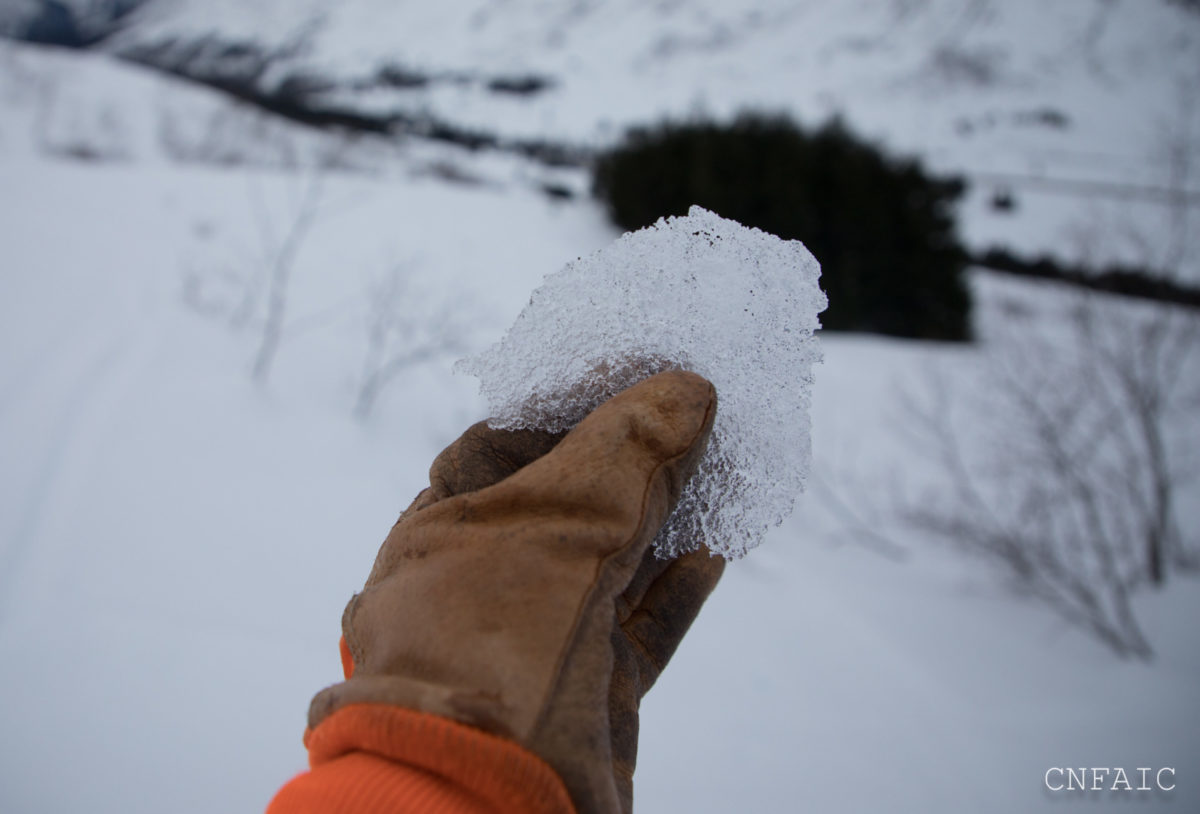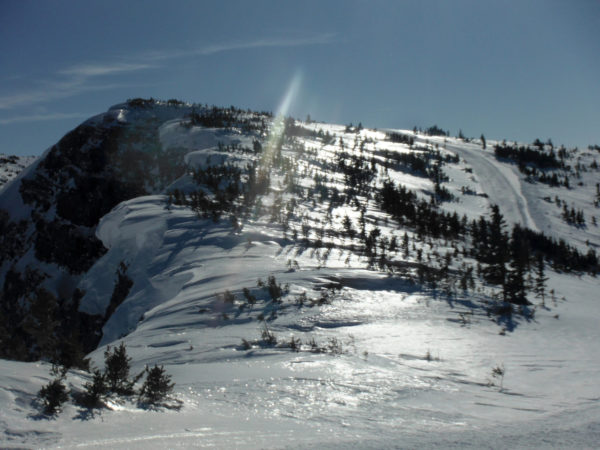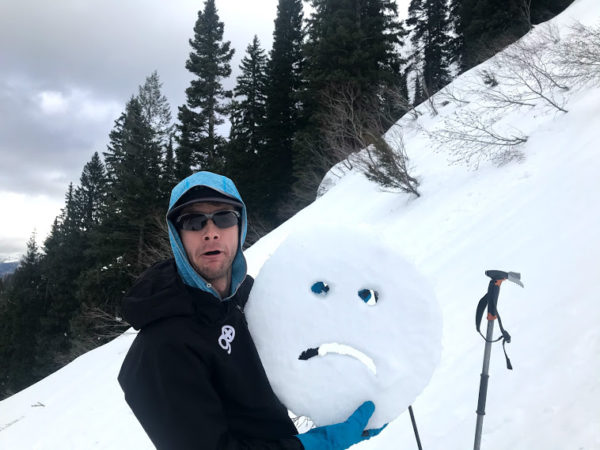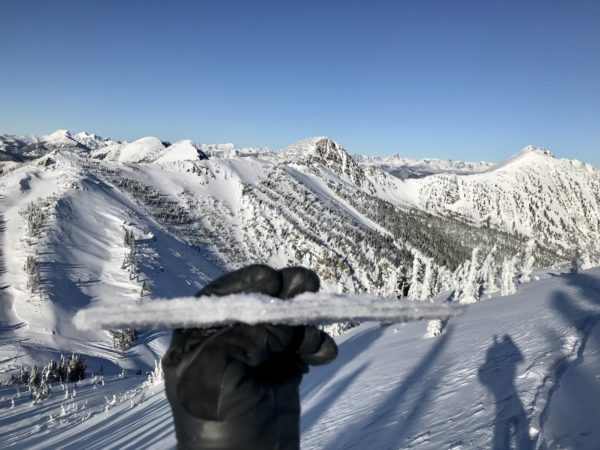A thin crust formed by rain-on-snow.

Credit: Chugach National Forest Avalanche Information Center
Rain crusts form from rain freezing on the snow surface. They are characterized by a hard, thin, often, but not always breakable surface that forms ubiquitously on all aspects below the rain/snow transition. The thickness and strength of these crusts can vary dramatically with elevation.

The sheen from a rain crust. Credit: Crested Butte Avalanche Center

Rain crust is often used as a catch-all term to describe crusts that form from rain-on-snow events. More commonly, rain causes snowmelt that is technically classified as a melt-freeze crust (as shown here). Either way, it makes for unpleasant riding conditions. Credit: Flathead Avalanche Center.

If facets develop around a rain crust, they can plague the snowpack for most of the season as a persistent weak layer. Credit: Flathead Avalanche Center



